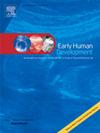学龄前小头畸形儿童的生长缺陷和颅面动力学:一项综合研究
IF 2
3区 医学
Q2 OBSTETRICS & GYNECOLOGY
引用次数: 0
摘要
目的探讨学龄前小头畸形儿童的身体和颅面生长模式,并评价其潜在的临床意义。方法本前瞻性研究纳入一家三级医院1-5岁小头畸形(头围<; - 3个标准差)患儿130例(男童76例,女童54例),对照组130例年龄和性别匹配。采用标准化技术和仪器每6个月测量9个颅面尺寸(头围、头长、头宽、面相长度、形态学面相长度、最小额径、双颧直径、双侧直径和总颌高)。体重和身高也被记录下来。数据分析包括使用曼-惠特尼测试比较生长参数和相关分析来探索头围和其他物理测量之间的关系。结果与对照组相比,小头畸形患儿的体重、身高和颅骨尺寸均显著降低(p < 0.001)。该组儿童体重不足(36.69%)、发育迟缓(40.89%)和消瘦(34.45%)发生率较高。大多数小头症患儿头型短,脸宽,前额宽。面部测量结果因性别而异:男孩的面部长度较短,而女孩的面部长度较长,这表明小头症的颅面特征有性别差异。尽管与下巴相关的测量是独立的,但头围和身体尺寸之间存在显著的相关性。结论小头畸形患儿表现出明显的生长缺陷和颅面发育改变,需要进行综合评估。研究结果强调了早期、有针对性的干预措施对解决这些儿童复杂的生长和发育挑战的重要性。本文章由计算机程序翻译,如有差异,请以英文原文为准。
Growth deficits and craniofacial dynamics in preschool children with microcephaly: A comprehensive study
Objectives
This study aimed to examine physical and craniofacial growth patterns in preschool-aged children with microcephaly and evaluate their potential clinical significance.
Methods
A total of 130 children (76 boys, 54 girls) aged 1–5 years with microcephaly (head circumference <−3 standard deviations) were enrolled in this prospective study at a tertiary care hospital, with 130 age- and sex-matched healthy controls. Nine craniofacial dimensions (head circumference, head length, head width, physiognomic facial length, morphological facial length, minimum frontal diameter, bizygomatic diameter, bigonial diameter, and total jaw height) were measured every six months using standardized techniques and instruments. Body weight and height were also recorded. Data analysis involved comparison of growth parameters using Mann-Whitney tests and correlation analysis to explore relationships between head circumference and other physical measurements.
Results
Children with microcephaly exhibited significantly reduced body weight, height, and cranial dimensions compared to controls (p < 0.001). There was a higher incidence of underweight (36.69 %), stunted (40.89 %), and wasted (34.45 %) children within this group. The majority of microcephalic children had a brachycephalic head shape, with broad faces and wide foreheads. Facial measurements differed by sex: boys showed shorter physiognomic facial lengths, while girls had longer faces, suggesting sex-specific craniofacial trends in microcephaly. A significant correlation was found between head circumference and body dimensions, though jaw-related measurements were independent.
Conclusions
Children with microcephaly demonstrated considerable growth deficits and altered craniofacial development emphasizing the need for comprehensive assessments. The findings highlight the importance of early, targeted interventions to address the complex growth and developmental challenges in these children.
求助全文
通过发布文献求助,成功后即可免费获取论文全文。
去求助
来源期刊

Early human development
医学-妇产科学
CiteScore
4.40
自引率
4.00%
发文量
100
审稿时长
46 days
期刊介绍:
Established as an authoritative, highly cited voice on early human development, Early Human Development provides a unique opportunity for researchers and clinicians to bridge the communication gap between disciplines. Creating a forum for the productive exchange of ideas concerning early human growth and development, the journal publishes original research and clinical papers with particular emphasis on the continuum between fetal life and the perinatal period; aspects of postnatal growth influenced by early events; and the safeguarding of the quality of human survival.
The first comprehensive and interdisciplinary journal in this area of growing importance, Early Human Development offers pertinent contributions to the following subject areas:
Fetology; perinatology; pediatrics; growth and development; obstetrics; reproduction and fertility; epidemiology; behavioural sciences; nutrition and metabolism; teratology; neurology; brain biology; developmental psychology and screening.
 求助内容:
求助内容: 应助结果提醒方式:
应助结果提醒方式:


